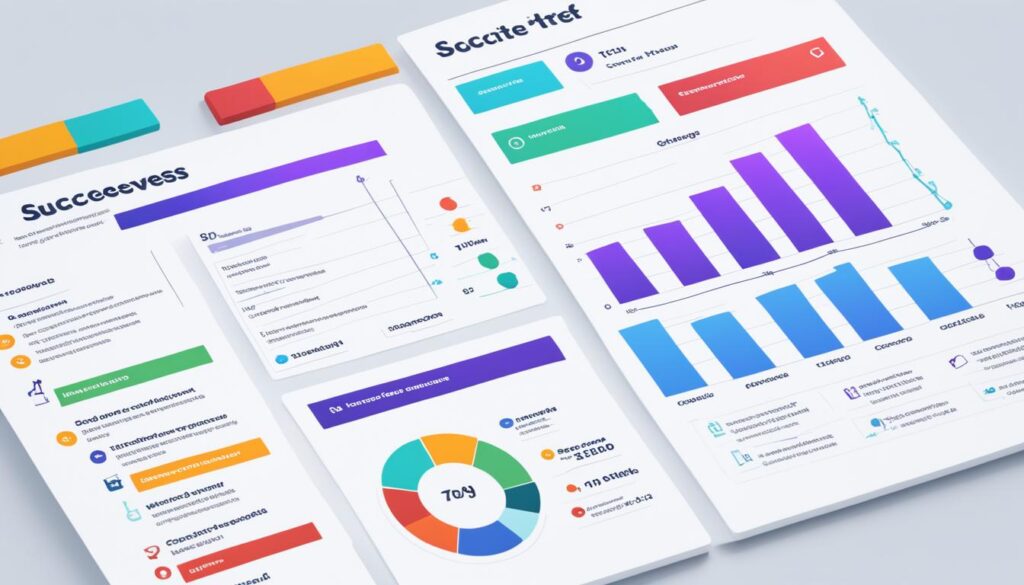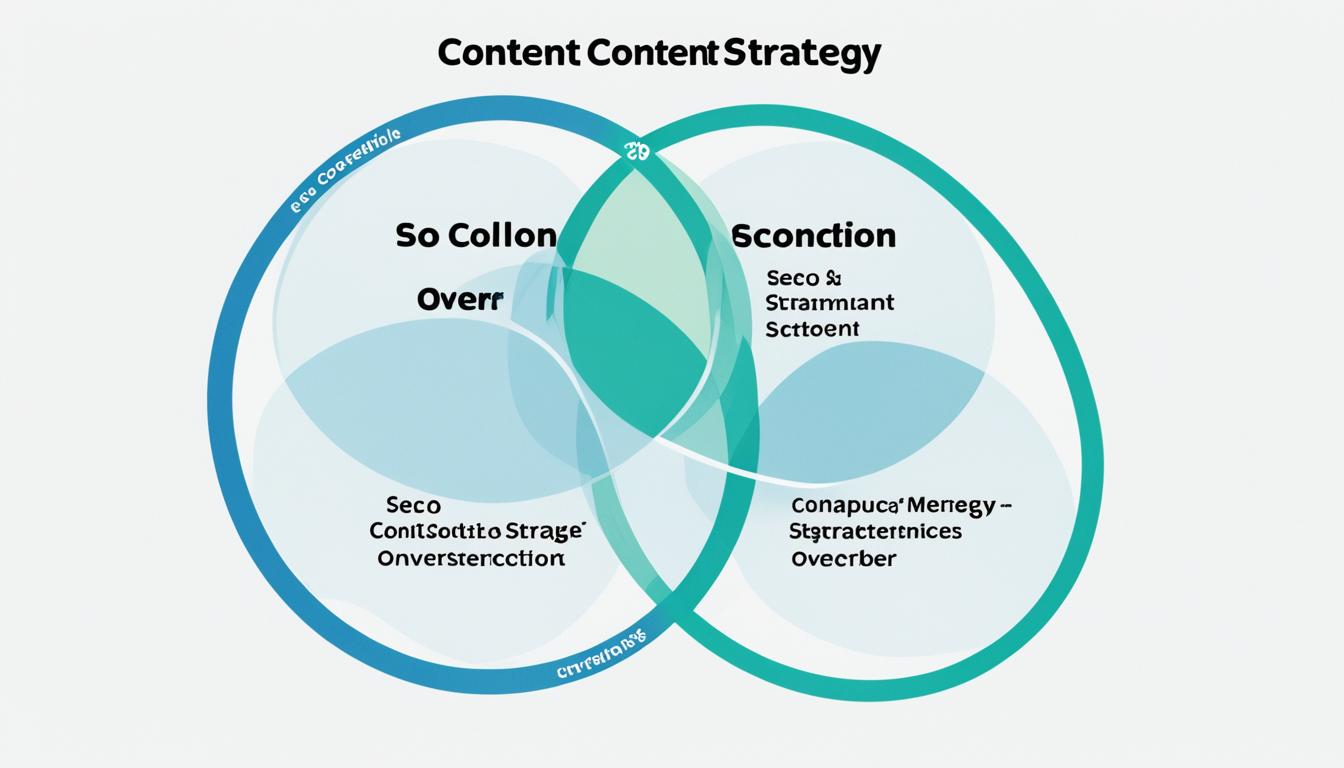Can a well-crafted content strategy change your online presence and brand image? In today’s digital world, businesses must balance managing their reputation with SEO goals. A strong content strategy can change a company’s online image, increase engagement, and make it more visible.
Content marketing is key in digital marketing, with 70% of marketers using it1. This shows how effective it is in shaping how people see a brand and drawing in customers. A smart content strategy is key to winning over and keeping customers happy at every step of their journey.
By mid-Q2, companies with a content strategy often see more traffic and more conversions1. This shows how well aligning reputation management with SEO goals through content can work.
High-quality, optimized content ranks better in search results and makes brands more visible, bringing in more organic traffic1. This link between content quality and SEO is essential for a strategy that meets both reputation management and search engine goals.
Key Takeaways
- Content strategy is key for balancing reputation management and SEO goals
- 70% of marketers invest in content marketing for its proven effectiveness
- Implementing a content strategy can lead to increased traffic and conversions
- High-quality, optimized content improves brand visibility and organic traffic
- A well-executed strategy aligns team efforts and enhances content consistency
- Content marketing builds brand authority and trust with the audience
Understanding the Intersection of Content Strategy, Reputation Management, and SEO
Content strategy, online reputation, and search engine optimization are key in digital marketing. They work together to shape how businesses appear and interact online. A good content strategy helps create and share content that meets audience needs. It’s key to effective content marketing.
Online reputation management shapes how people see a company. A good reputation builds trust and opens up business opportunities. Bad content can hurt a company’s image and lose customers2.
SEO is crucial for being seen online. Most people don’t go past the first page of search results. So, high rankings are important for getting customers2. Local SEO also helps by making sure businesses show up in local searches3.
When these elements work together, they make a brand stronger online. Regular updates keep the audience engaged and help with search rankings3. This approach also boosts customer engagement and makes the brand more known.
“Combining SEO strategies with reputation repair can help businesses manage their public image effectively.”
Tools like Google Alerts and SEMrush help keep an eye on online reputation3. With these tools, businesses can quickly know what people think and keep a positive image.
| Element | Function | Impact |
|---|---|---|
| Content Strategy | Guides content creation and distribution | Meets audience needs, supports business goals |
| Reputation Management | Shapes public perception | Builds trust, influences consumer behavior |
| SEO | Improves search visibility | Attracts qualified traffic, enhances online presence |
Setting Clear Goals for Your Content Strategy
Setting clear goals is key to a strong content strategy. We aim for SMART goals: Specific, Measurable, Achievable, Relevant, and Time-bound. For example, “Increase organic traffic by 100% in 6 months” is a SMART goal that meets our SEO goals.
It’s vital to pick the right KPIs to measure our content’s success. These include organic traffic, new organic traffic, and more. Tracking these helps us see how we’re doing and make changes as needed.

Clear goals help us manage our resources and track our content marketing progress. Did you know 88% of B2B sites are found through unbranded searches? This shows how important it is to make our content search engine friendly to draw in traffic4.
When setting goals, think about both short-term and long-term aims. Short-term goals might be about getting more leads or boosting brand authority. Long-term goals could be about keeping customers loyal and growing organic traffic over time.
Creating content that’s valuable to users is key before we worry about search engine rankings. Search engines favor content that users find useful. So, our goals should focus on making content that’s valuable4. By making great content, we can increase sales and keep customers coming back4.
Finally, always check your goals regularly. Use surveys to see how your audience views your brand. This feedback can help us improve our content strategy and build trust with our audience4.
Content Strategy for Reputation Management: Key Components
A well-crafted content strategy is key to managing your reputation online. We’ll look at the main parts of a strong strategy. This ensures your brand’s online image matches your goals.

First, we make detailed audience personas. These are based on research and interviews. They help us know what our audience wants and likes. After that, we do a content audit to find what’s missing and what’s working in our content5.
Keyword research is vital for making content that meets audience and search engine needs. We use tools like SEMrush to find the right keywords. This helps us pick the best content types and channels for our audience.
An editorial calendar keeps our content creation consistent. It helps us plan and keep a steady flow of information to our audience6.
| Component | Purpose | Tools/Methods |
|---|---|---|
| Audience Persona | Understand target audience | Surveys, interviews, research |
| Content Audit | Identify gaps and opportunities | Content analysis, performance metrics |
| Keyword Research | Improve SEO and relevance | SEMrush, Google Keyword Planner |
| Content Types | Engage audience effectively | Blog posts, videos, infographics |
| Distribution Channels | Reach target audience | Social media, email, industry forums |
| Editorial Calendar | Ensure consistent content | Content scheduling tools |
By using these key parts, we make a full content strategy. This supports our reputation management goals and helps our SEO.
Integrating SEO Best Practices into Your Reputation Management Content
Combining SEO with reputation management is key for online success. By focusing on on-page optimization, link building, and technical SEO, businesses can get more visible and credible7. Let’s explore some important strategies:

Start by making your content search-friendly. Create top-notch articles that answer user questions and needs. This way, you’ll get better search rankings and draw more positive reviews. These reviews help improve your online reputation87.
Then, work on technical SEO. Make sure your site works well on mobile, loads fast, and is easy for search engines to find. These steps make for a better user experience and help with search rankings. A well-optimized site keeps visitors coming back, leading to more positive brand interactions.
- Implement proper internal linking
- Earn quality backlinks
- Regularly update and refresh content
Don’t overlook local SEO. Make sure your Google Business Profile is up to date and encourage customers to leave reviews. Positive reviews boost your local search rankings and act as strong social proof for potential customers8. Responding to reviews, both good and bad, shows you care about customer feedback and aim to improve.
By using these SEO best practices in your reputation management, you’ll build a strong online presence. This approach helps keep your brand positive and boosts your search visibility.
Measuring Success: KPIs for Your Aligned Strategy
We must track key performance indicators (KPIs) to see how well our content strategy works. These metrics show us if we’re hitting our goals in reputation management and SEO.

- Organic traffic growth
- Search rankings for target keywords
- Conversion rates from organic traffic
- Engagement metrics (time on page, bounce rate)
- Brand mentions and sentiment
- Backlink quality and quantity
Financial KPIs like return on investment (ROI) and cost per acquisition (CPA) check how our marketing spends money9. For content marketing, we look at website traffic, time on page, and bounce rates to see success9.
Social media reach, engagement rate, and follower growth rate tell us how well our social media marketing does9. These metrics give us clues about what our audience likes and how our content is doing10.
| KPI Category | Example Metrics | Purpose |
|---|---|---|
| Financial | ROI, Revenue Growth Rate | Measure financial impact |
| Acquisition | CAC, Conversion Rate | Assess acquisition strategies |
| Retention | Customer Churn Rate, CLV | Analyze customer loyalty |
| Content Marketing | Website Traffic, Time on Page | Evaluate content performance |
Use tools like Google Analytics and SEO platforms to track these metrics. Regularly review and tweak your strategy with the insights from these KPIs.
Conclusion
We’ve looked at how content strategy, SEO goals, and managing our reputation help boost digital marketing. These three are key to our online success. By making quality content that our audience likes and follows SEO rules, we can make a good brand image and get more visibility11.
Content marketing really helps with customer engagement. Brands get more noticed when their content matches their values. Things like website traffic, how engaged people are, and how many convert are key to seeing how well our content does12. These numbers help us make our strategy better and meet what our audience wants.
Being open is important for managing our reputation. It builds trust with everyone from investors to customers to employees. When we share what we do, we set the stage for lasting success11. By having clear goals, knowing our audience, and checking our performance often, we can handle the digital world’s changes with confidence.
Let’s keep being proactive. Planning for problems and using data to make changes will keep our online presence strong. As we go forward, let’s keep our content strategy, how we manage our reputation, and SEO goals in line for ongoing digital marketing success1112.
FAQ
What is the importance of aligning content strategy with reputation management and SEO?
How do you set clear goals for your content strategy?
What are the key components of a content strategy for reputation management?
How can you integrate SEO best practices into your reputation management content?
What KPIs should you use to measure the success of your aligned strategy?
Why is it important to regularly review and adapt your content strategy?
Source Links
- How to Develop a Content Strategy in 7 Steps: A Start-to-Finish Guide – https://blog.hubspot.com/marketing/content-marketing-plan
- SEO and Reputation Repair: Optimizing Your Way to a Better Image – https://reputationmanagement.co/seo-and-reputation-repair-optimizing-your-way-to-a-better-image/
- The Role of SEO in Online Reputation Management – https://www.linkedin.com/pulse/role-seo-online-reputation-management-md-abu-bocor-siddik-orvpc
- 8 important content strategy goals to consider – https://searchengineland.com/content-strategy-goals-394472
- Reputation Management Strategy Guide – https://broadly.com/blog/reputation-management-strategy/
- Rep. Mgmt. Strategy – https://www.reputationx.com/resources/orm/reputation-strategy
- SEO + Reputation Management: Fundamentals and Best Practices – https://blog.reviewshake.com/seo-reputation-management/
- SEO reputation management: Top strategies for success – https://www.semrush.com/local/blog/seo-reputation-management/
- Understanding Key Performance Indicators (KPIs) in Marketing – https://improvado.io/blog/marketing-kpis
- Top 12 Content Marketing KPIs to Track for Success – https://managingeditor.com/content-marketing-kpis/
- 7 Proven Strategies For Corporate Reputation Management – https://www.realnewspr.com/blog/7-proven-strategies-for-effective-corporate-reputation-management/
- How to Use Content Marketing to Build a Strong Brand Reputation – 2Stallions – https://2stallions.com/blog/how-to-use-content-marketing-to-build-a-strong-brand-reputation/

